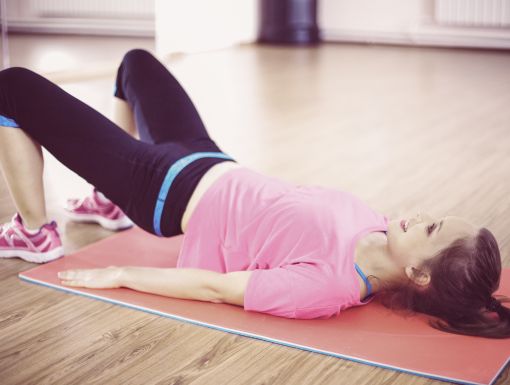
Pelvic Floor Therapy: A Pregnant Mom's Guide for Easy Recovery
Did you know that cesarean births account for one in three births in the United States? According to a recent study, c-sections are now the most common surgery performed in the United States. More than 1 million women give birth by cesarean every year. Chances are that you or someone you know has had one.
Like any surgery, cesarean births come with a recovery period. With a little help from a pelvic health physical therapist, you can improve your recovery – and even your pregnancy and delivery – with some pelvic floor treatment. Physical therapy can even help reduce the chances that you may need a c-section. The American College of Obstetricians and Gynecologists says that exercising during pregnancy can help decrease the odds that you’ll need a C-section by more than 50% while also lowering your risk for certain complications like hypertension and diabetes.
But pelvic therapy isn’t just for c-section moms. Women delivering vaginally can benefit from these targeted exercises, too! Pregnant moms can start seeing a pelvic health physical therapist as soon as they find out they are pregnant and can continue with therapy right up to delivery – and even afterward, for help with recovery. No matter where you are in your pregnancy or birth recovery, a therapist can help. Whether you need to boost those belly muscles for delivery, reduce pregnancy pain or combat post-delivery incontinence, our team is here to help.
Give us a call at 504-842-4348 to learn more about pelvic health physical therapy or schedule a consultation.
During Pregnancy
Increasing belly strength before delivery can help combat some common offenders of pregnancy – like pain, belly muscle separation (known as diastasis recti) and even urinary leakage. Your belly muscles help manage pressure during breathing, exercise and physical activity to limit pain and stress on surrounding organs and body systems. Women with a weak belly are more likely to have back and pelvic pain and suffer from urinary leakage. Here are a few tips you can do at home to help prevent these issues:
Tummy Squeezes. Performing tummy squeezes daily can help strengthen your belly for delivery while also helping prevent diastasis recti.
- To do the exercise, imagine you have six-pack abs and are trying to “zip up” your belly like you would zip up a pair of pants. Another option is to imagine you are trying to bring your hip bones together.
- Do not hold your breath; continue to breathe.
- Keep your head relaxed. Do not curl up your neck.
- This is a light exercise, and you should not be straining.
- You can do this exercise in any position, but it is easiest while lying flat on your back.
- Hold the tummy squeeze for five seconds and repeat 10 times.
Bounce On.
This exercise can help open your hips for delivery.
- Take a seat on a big exercise ball.
- Sit up tall and relax your hips.
- Lightly bounce up and down or try making circling motions with your hips.
- Perform two sets of 10 repetitions once a day.
Practicing these exercises regularly can help baby drop down into your pelvis to prepare for a swift and easy delivery.
During Labor
If you’re able to give vaginal birth, you’ll also need to learn to push. Our patients sometimes tell us that they have no clue what to do when they get to the pushing part of labor. Learning to push ahead of delivery day can improve your birthing experience by lowering the risk of tearing and the need for extra interventions such as cesarean, forceps or vacuum-assisted delivery. A pelvic health therapist can teach you how to contract these muscles correctly to make the most of laboring.
After Delivery
You’ve delivered baby: Welcome to the fourth trimester! While you’re getting those newborn snuggles in, you may also be experiencing some post-delivery issues like incision pain or leaking urine (just some of the many surprises your body may have in store after having a baby). Here are a few tips to help get you through the post-partum days:
Stop the Leakage. Dribbling urine can be an embarrassing side-effect of birth.
- Practice engaging your pelvic floor by giving five quick squeezes (imagine you’re stopping your urine mid-stream) a few times a day.
Belly Massage. During a cesarean birth, a cut is made through the belly to deliver the baby. This cut goes through many layers of tissue (think of a lasagna), and they’re all made of different materials. Sometimes these many layers do not heal back together perfectly, making the scar a bit bumpy or painful to the touch. Scar massage is an easy technique you can use about six to eight weeks after delivery (once your doctor says your incision is well healed) to coach those layers into healing more smoothly with less sensitivity.
- Use one hand or finger to anchor the skin and tissue while the other massages.
- Massage over the scar tissue and the area around it in different directions like up and down, side-to-side and in circles.
- You can do this both lightly at skin level and deeply into the tissue. Of course, be sure to apply only as much pressure as is comfortable.
- Repeat massage daily.
Breathe Deep. Also great for during pregnancy, practicing “belly breathing” can help manage painful pressure in your abdomen and even relieve stress. It helps your tummy and hip muscles contract and relax for better mobility and decreased pain.
- Begin by placing one hand on your chest and the other on your belly. You can do this exercise in any position, but it is the easiest while lying flat on your back.
- The goal is to decrease breathing in your chest and focus on engaging your tummy.
- Imagine your belly is a balloon; with a big breath in, make it expand in all directions, including into your back and sides.
- Try this for five minutes or practice throughout the day to both relax your body and strengthen muscles.
- C-section moms, this exercise can also help heal your surgical scar. It offers a light stretch on your belly to help all those lasagna layers heal more smoothly.
Tummy Squeezes. Yep, the exercise outlined above to help during pregnancy can help you heal and and increase belly strength after delivery. Bonus: they can also help with posture, stability and pain management!
If you choose to enlist the help of a pelvic health physical therapist during your pregnancy or postpartum journey, they can help you develop a regimen that’s unique to you and your needs. Pelvic floor therapists can coach you through ways to safely return to your daily routine, decrease your pain, boost your strength and mobility and improve any urinary issues.
Learn more about female pelvic health at Ochsner. To make an appointment, call 504-703-9601 or email pelvicfloor@ochsner.org. Our Pelvic Health Nurse Navigator will help guide you.



